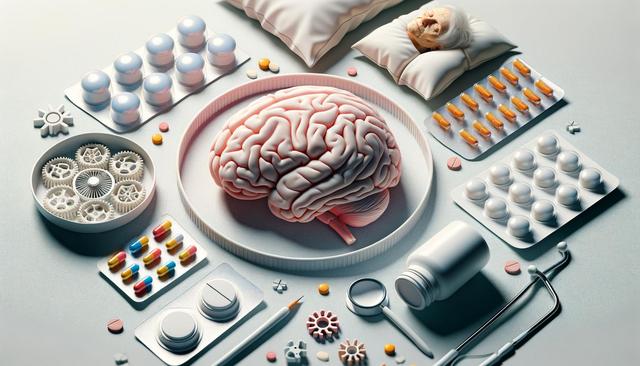Understanding the Role of Reconstruction in the Healing Process
For many individuals who have undergone a mastectomy as part of breast cancer treatment, reconstructive surgery can be a vital part of emotional and physical recovery. The Role of Reconstruction in the Healing Process goes beyond physical appearance—it can restore a sense of wholeness and contribute to long-term emotional well-being. While some patients opt to remain flat or use external prostheses, others choose breast implants as a way to rebuild their silhouette. The decision is deeply personal and should be made with careful consideration of medical advice, lifestyle, and personal values.
Reconstruction can be immediate—performed during the same surgery as the mastectomy—or delayed until after other treatments such as chemotherapy or radiation have been completed. Each approach has its own benefits and risks, and discussing these with a qualified surgical team is essential. Emotional healing is often supported by body image restoration, which is why many survivors find reconstruction to be a significant step in their journey.
What to Know About Breast Implants After Cancer Treatment
Choosing breast implants after cancer treatment involves understanding how prior therapies may affect reconstruction outcomes. What to Know About Breast Implants After Cancer Treatment includes knowing how radiation or chemotherapy can influence skin elasticity, tissue healing, and implant placement. These treatments may limit the timing or type of reconstruction available, and in some cases, additional procedures may be needed to ensure optimal results.
Patients should also consider factors such as:
- Potential complications, including infection or capsular contracture
- The longevity of implants and the possibility of future replacements
- The impact on body symmetry and sensation
Having a candid conversation with a plastic surgeon experienced in post-mastectomy reconstruction is crucial. They can provide realistic expectations and guide patients through the various options available, always considering the broader context of cancer recovery.
Types of Implants Used After Mastectomy
There are several Types of Implants Used After Mastectomy, each with unique characteristics. The two primary categories are saline and silicone implants. Saline implants are filled with sterile salt water and tend to have a firmer feel, while silicone implants are filled with a gel that more closely mimics natural breast tissue. Both types are FDA-approved and widely used in post-cancer breast reconstruction.
Additionally, newer options like cohesive gel or “gummy bear” implants offer another alternative for those seeking a more anatomically shaped result. Each type comes with its advantages and considerations:
- Saline: Adjustable volume and a smaller incision site
- Silicone: More natural look and feel, but may require regular monitoring
- Form-stable (gummy bear): Maintains shape better, less risk of leakage
The choice of implant often depends on body type, previous treatments, and the patient’s desired outcome. Surgeons may also use expanders to gradually stretch the skin before placing the final implant, especially in delayed reconstruction cases.
Finding the Right Clinic and Support Team
One of the most important steps in the reconstruction journey is Finding the Right Clinic and Support Team. Not all medical centers have the same level of expertise in post-cancer reconstructive surgery, so choosing a clinic with a multidisciplinary team experienced in oncology and plastic surgery can make a significant difference. This team should include oncologists, plastic surgeons, nurses, and mental health professionals who work collaboratively to support the patient throughout the process.
When evaluating clinics, consider the following:
- Board certification and specialization of surgeons
- Experience with cancer-related reconstructions
- Availability of pre- and post-operative counseling
- Patient testimonials and before-and-after galleries
Access to a compassionate and knowledgeable support team can ease anxiety and help patients make informed decisions. It’s also beneficial to ask about logistical support, such as help with insurance paperwork or recovery planning, which can reduce the overall stress associated with surgery.
Supportive Recovery Programs and Survivor Resources
Healing doesn’t end with surgery. Supportive Recovery Programs and Survivor Resources play a vital role in helping individuals reintegrate into daily life and manage the emotional aspects of post-cancer recovery. These programs often include physical therapy, counseling services, peer support groups, and workshops focused on body image and self-esteem.
Some of the resources that survivors may find helpful include:
- Community-based support groups facilitated by trained counselors
- Online forums and survivor networks
- Rehabilitation services tailored to post-mastectomy recovery
- Educational seminars on long-term health and wellness
Engaging with these resources can foster a sense of community and empowerment. Many survivors find that connecting with others who have undergone similar experiences provides invaluable emotional support. Moreover, structured recovery programs can help manage physical symptoms, such as limited mobility or lymphedema, often associated with breast cancer treatments.
Conclusion: Making Empowered Choices After Cancer
Choosing breast implants after cancer is a deeply personal decision that comes with many considerations. From understanding The Role of Reconstruction in the Healing Process to exploring Types of Implants Used After Mastectomy and Finding the Right Clinic and Support Team, patients are encouraged to take their time and seek guidance from qualified professionals. As discussed in What to Know About Breast Implants After Cancer Treatment, prior therapies and individual health factors can influence the right approach. Fortunately, Supportive Recovery Programs and Survivor Resources are available to help navigate this journey with confidence and care. Every step, from consultation to recovery, can be an empowering part of healing and reclaiming wellness after breast cancer.




Leave a Reply